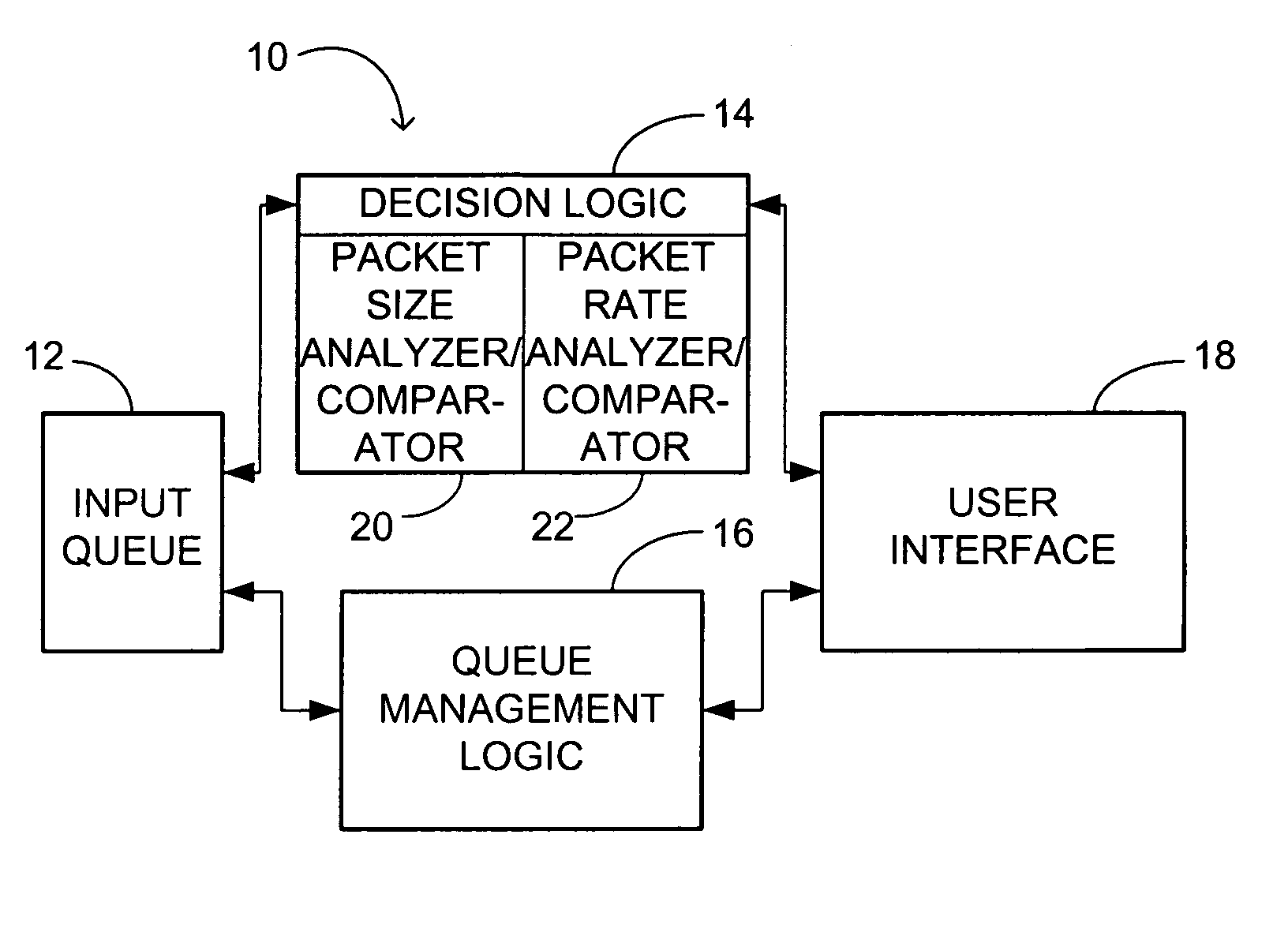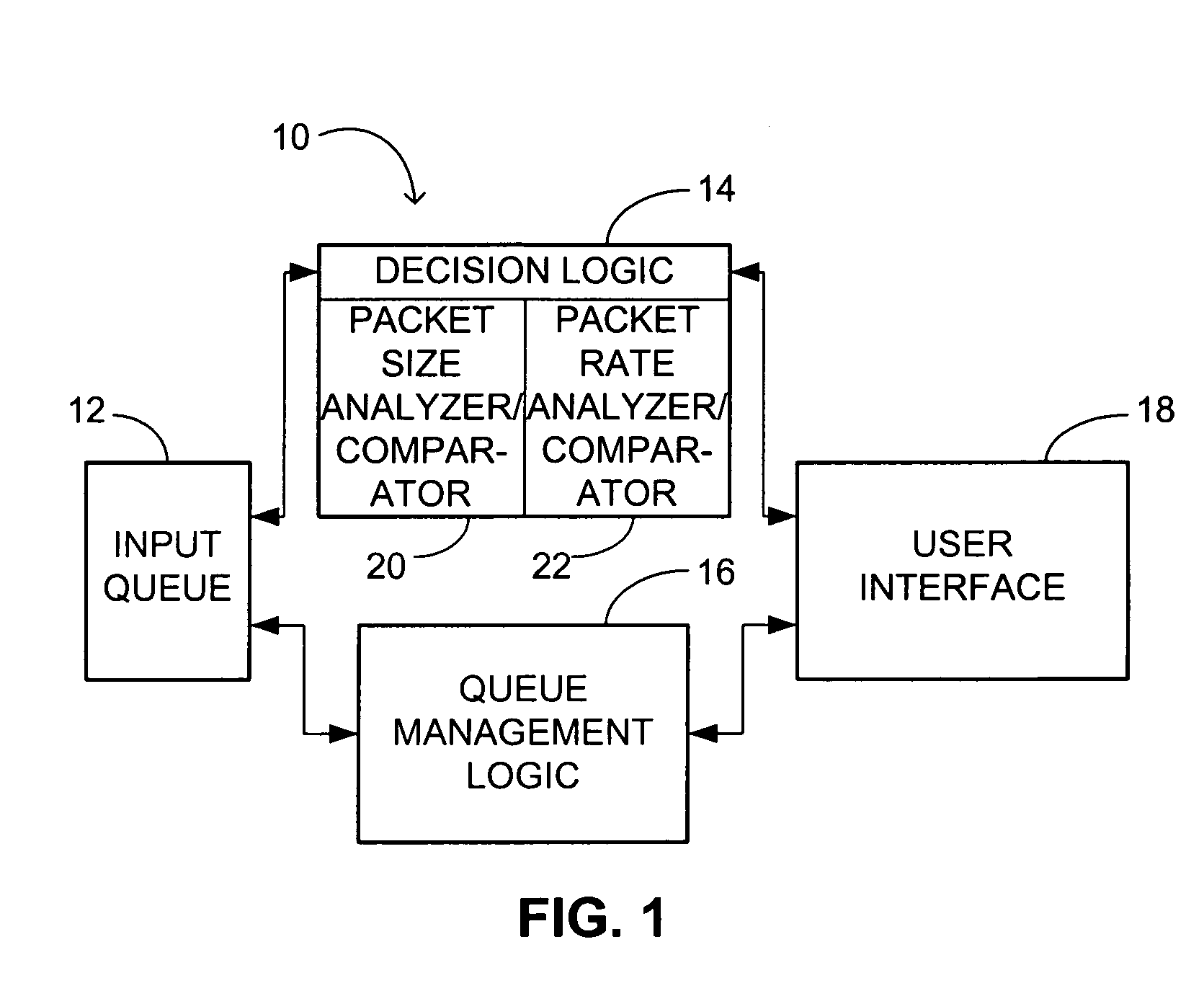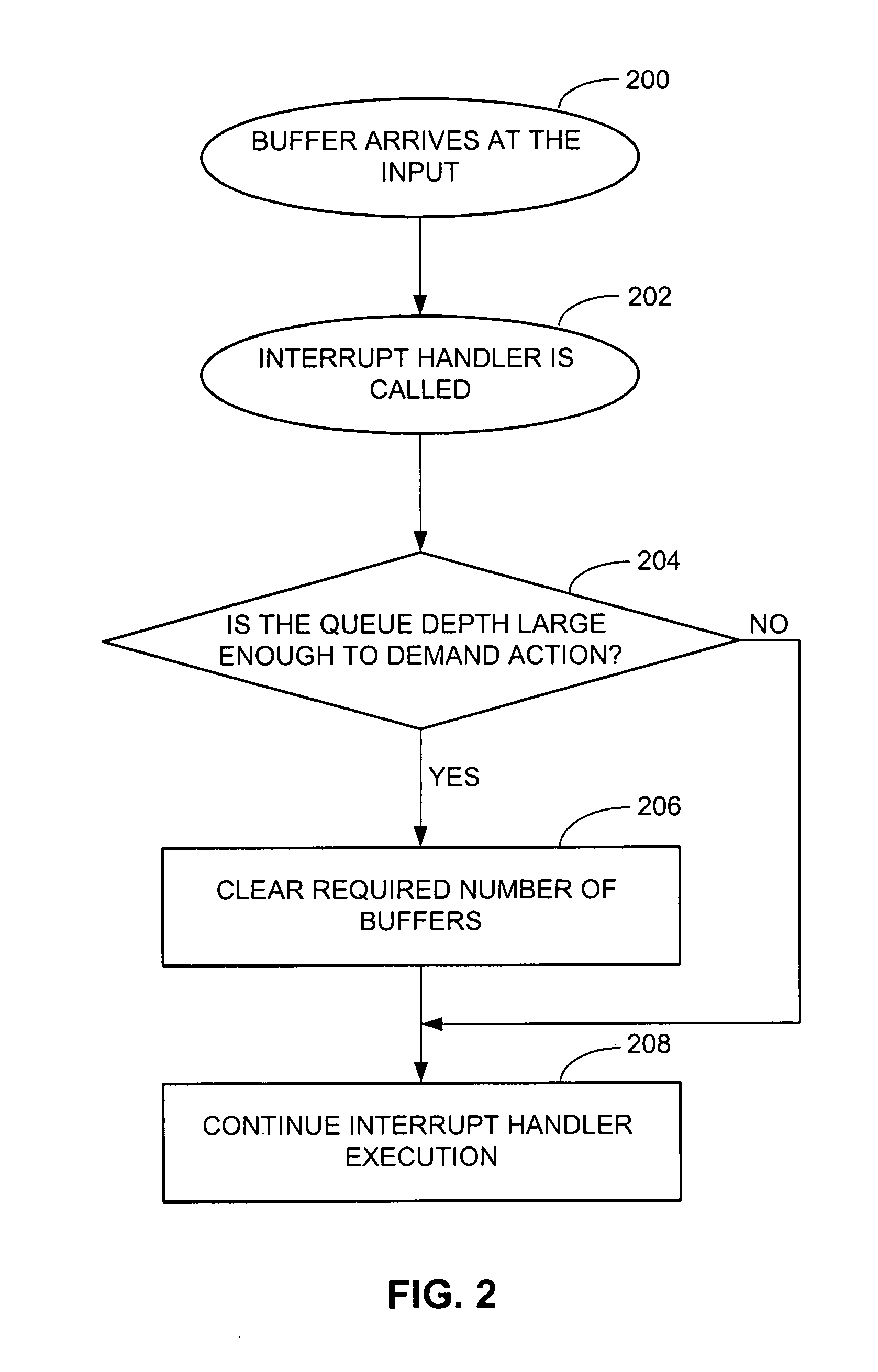Method and apparatus for reducing inbound traffic congestion in a voice frame network
a voice frame network and inbound traffic technology, applied in data switching networks, frequency-division multiplexes, instruments, etc., can solve the problems of preventing the possibility of using them on existing platforms, difficult to control the source of incoming data, and insufficient forwarding capacity of the router to handle concurrently
- Summary
- Abstract
- Description
- Claims
- Application Information
AI Technical Summary
Benefits of technology
Problems solved by technology
Method used
Image
Examples
Embodiment Construction
[0019]The present invention makes use of the characteristics of the voice data to classify the voice packets from the data packets. The voice packets are generated at regular intervals. The size of the voice packet is well known for every codec used. Knowing the various codecs that support voice traffic, the range of packet sizes for voice data can be easily determined. The following Table 1 shows the range of data payload and rate (in kilobits per second (kbps)) for different codecs.
[0020]
TABLE 1Codec (rate)PayloadG.711 (64 kbps)240 bytes G.711 (64 kbps)120 bytes G.726 (32 kbps)120 bytes G.726 (24 kbps)80 bytesG.726 (24 kbps)40 bytesG.728 (16 kbps)80 bytesG.729 (16 kbps)40 bytesG.729 (8 kbps)40 bytesG.729 (8 kbps)20 bytesG.723.1 (6.3 kbps)48 bytesG.723.1 (6.3 kbps)24 bytesG.723.1 (5.3 kbps)40 bytesG.723.1 (5.3 kbps)20 bytes
[0021]Those of skill in the art will appreciate that the non-voice data payload is variable and that most data applications try to send the data up to the maximu...
PUM
 Login to View More
Login to View More Abstract
Description
Claims
Application Information
 Login to View More
Login to View More - R&D
- Intellectual Property
- Life Sciences
- Materials
- Tech Scout
- Unparalleled Data Quality
- Higher Quality Content
- 60% Fewer Hallucinations
Browse by: Latest US Patents, China's latest patents, Technical Efficacy Thesaurus, Application Domain, Technology Topic, Popular Technical Reports.
© 2025 PatSnap. All rights reserved.Legal|Privacy policy|Modern Slavery Act Transparency Statement|Sitemap|About US| Contact US: help@patsnap.com



